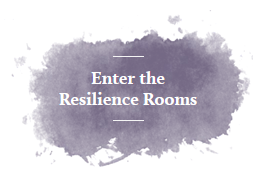Six ways to attach with kindness and connection.
Attachment theory explains how the parent-child relationship emerges and influences subsequent development in relationships. John Bowlby and Mary Ainsworth suggested that early attachment experience creates life-long templates impacting intimacy and connection in interpersonal relationships. Attachment allows children the foundation necessary to explore, learn and relate, and the wellbeing, motivation, and opportunity to do so. It is known to be associated with safety, stress regulation, adaptability, and resilience.
The Impact of Secure Attachment
It’s evidenced that insecure attachment contributes to difficulty regulating emotions interacting competently with peers, which may further contribute to attachment disorders, anxiety, depression, and self-esteem. Those with insecure attachment styles may become needy or clingy in their closest relationships, avoid closeness and intimacy, become anxious and uncertain, and/or feel they don’t deserve love or closeness in relationships. Alan Sroufe and Dan Siegel express, “The emotional quality of our earliest attachment experience is perhaps the single most important influence on human development.”
A series of landmark studies to discover the long-term impact of a secure attachment. Over a 35-year period, the Minnesota Longitudinal Study of Risk and Adaption (MLSRA) revealed that the quality of the early attachment resounded well into later childhood, adolescence, and adulthood, even when temperament and social class were accounted for. Those with secure attachment are likely to develop greater trust, social competence, independence, better coping skills, higher self-esteem, and all around more satisfying relationships.
We Do Not Get to Choose Our Children
We do not get to select our children, although sometimes we wish we could. The goodness of fit impacts our ability to attach, feel connected, be compassionate, and present with our children. You may be a parent who is affectionate and nurturing, while your child is reserved and wards off physical affection that was not initiated directly by them. You may also be a parent who is uncomfortable with intensity of emotion, and prefers to avoid conflict, while your child may be the quintessential drama queen or king and is experienced as willful and argumentative. These disparities can be unnerving, even to the most open and caring parent.
There is always a yearning for closeness and connection between parent and child, but when there is a lack of fit and attachment it can lend to conscious or unconscious anger, frustration, disappointment, and acting out behavior toward one another. It becomes quite challenging when a parent feels the need to nurture their child but would rather not and/or does not know how to.
When speaking about the element of fit, I am referring to appearance, personality, temperament, emotionality/level of emotional intelligence, and general impulsivity and reactivity of behavior. There is a necessity to assess and distinguish whether it is a matter of fit, or whether your child is neglectful of themselves in some significant way or is participating in destructive behavior that may be putting him or her at a disadvantage.
For example, if your child is neglecting their self-care, namely, showering or brushing their teeth, it may result in them being socially isolated or in compromised health. In these instances, it is not a matter of “fit” and them just being who they are, but direct actions that he or she is taking that is compromising and self-destructive. These issues obviously need to be addressed, but in a highly sensitive, caring, and mindful way, to avoid coming across as judgmental, harsh, and unsympathetic.
Regarding the fit, take a moment to ask yourself, if this were someone else’s child, would you “like”, feel connected, feel compassion toward, or desire to have him or her in your life? Further, you may observe that you feel more connected and have preference for one of your children over the others because of the goodness of it. You may feel intense negative feelings about, act differently or negatively toward, and/or judge the less preferred child more harshly than the rest of your children.
Carrying these unprocessed thoughts could lead to the vicious cycle of shame regarding your thoughts, and guilt over your behavior. In a desire to get rid of the negative thinking, you may be prompted to avoid and distract from the negative thoughts and feelings. This may provide temporary relief, but eventually the thoughts and feelings will resurface, especially following a difficult interaction with your child.
The primary thoughts themselves aren’t problematic. It is the layers of thoughts about the thoughts and feelings about the feelings, as well as the counterproductive behavior that creates a wedge between you and your child. You may find yourself, yelling, exhibiting aggressive and exasperated body language, saying things you didn’t mean to say, withholding affection, attention or compassion, and/or being especially harsh.
Your child justifiably gives you good reason for thinking and feeling the way you do. You could most certainly validate and rationalize your thoughts, feelings, and behavior toward him or her. However, the cycle isn’t helpful or constructive for your relationship. It is neither you nor your child’s fault for being so different and wanting and needing different things. The fit is the way it is. You and your child are perfectly okay just as you are.
Just because you may have disparaging thoughts and feelings about your child does not make you an unloving, uncaring, or a “bad” parent. Thoughts and feelings come and go. It is more about the actions you take on behalf of them.
Here are 6 things you could proactively do to facilitate attachment and connection with your child:
- Reframe the way you think about it. Rather than not “liking” or “approving of” your child, think of it as not being an ideal fit between the two of you. It is not something that either one of you did or created, it just is.
- Because of thinking and feeling negatively about your child, their inadequacies will be at the forefront. It inhibits you from seeing the rest of him or her, including what is “right”, his or her strengths, and your points of similarities and mutuality. Purposefully notice and mindfully pay attention to these too and interact with your child with these characteristics in mind.
- Notice if there is a prompt to change or “fix” your child. Recognize the multitude of methods that you may have used to unsuccessfully carry out this task. Try on the idea of accepting your child just as he or she is. Make concerted efforts to avoid imposing the way in which you think he or she “should” be or how you would “prefer” for him or her to be.
- Seek to understand your child better, on all the elements of fit (appearance, personality, temperament, emotionality/level of emotional intelligence, and general impulsivity and reactivity of behavior). Be curious and open to the way he or she thinks, feels, and functions. Identify and talk to your child about the similarities and differences and how it impacts each of you and your relationship with each other.
- Find points of commonality and look to foster these to fortify a more nurturing and connected relationship.
- Commit to altering the way in which you refer to your child. For example, instead of referring to your child as stubborn, try to also consider his or her determination, passion, and spiritedness. Directly refer to him or her using more positive and encouraging language. Modifying language is known to generate openness and flexibility which increases the chances of us challenging our preconceived notions and habitual or automatic responses and behaviors.
Look deep within yourself to discover how you genuinely think and feel about the fit between you and your child. How willing are you to openly accept and work with it? Working collaboratively and compassionately with your child is needed in order to foster the loving and nurturing relationship you both undeniably want and deserve.
Here is a Working Through Fear Guided Meditation led by me. Please subscribe to my YouTube channel for more interviews and guided meditations.
Blog as published in Psychology Today.



